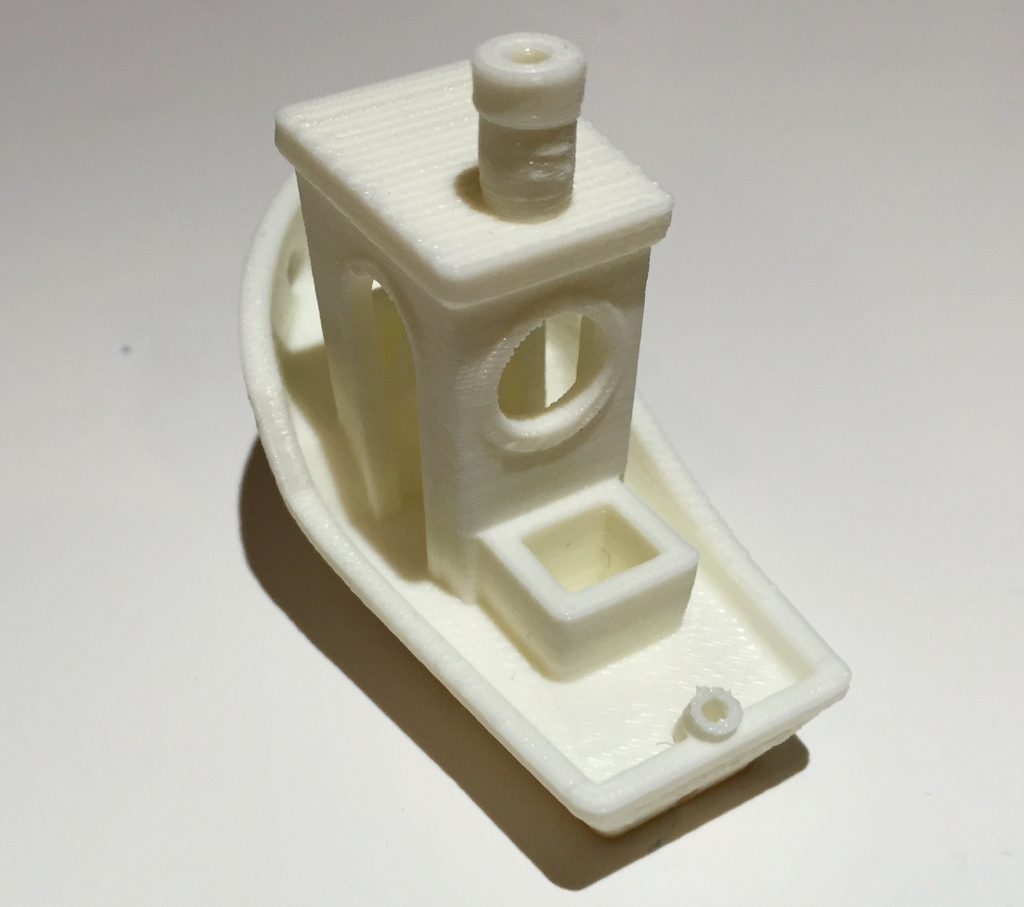
We’ve been testing some new 3D printer filament from FoxSmart, and it’s pretty interesting.
We’ve written previously on FoxSmart’s ultra-low cost and good quality filaments, but there’s been a big change in their product line. Originally they marketed only PLA filament, but now they’ve added a line of ABS and specialty filaments.
The company now offers standard ABS filament in seven colors, including: white, clear, red, black, green, blue and orange. For specialty filaments, they offer a Wood PLA hybrid filament and also a flexible filament made from TPU (Thermoplastic polyurethane), which is offered in white, clear, blue, red, orange and green.
We tested two ABS filaments, their standard White ABS and a new flexible filament.
As shown at top, the white ABS prints near-perfectly with no issues. Priced at only USD$18 per kilogram, this is a really good deal for good quality filament.
Here we see a comparison of the FoxSmart’s white ABS versus green “Name Brand” filament from a popular 3D printer manufacturer. As you can see, there is virtually no difference in print quality. There is quite a difference in price, however.
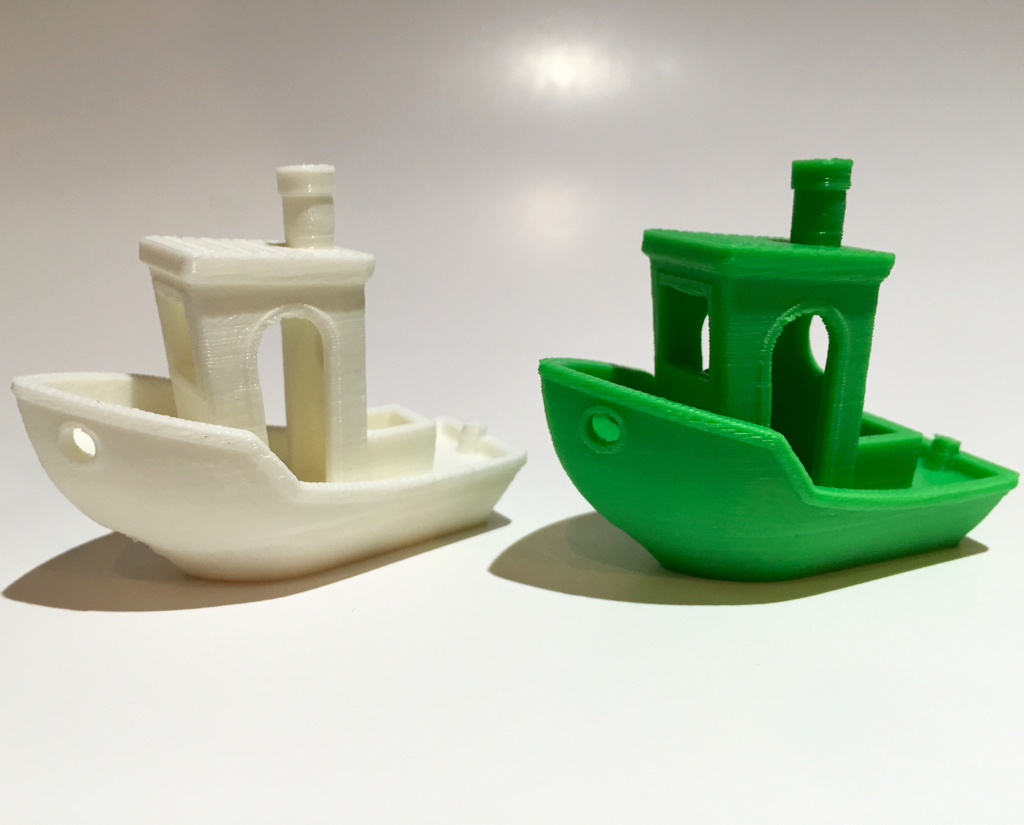
The flexible filament is quite different to print than normal rigid filament. Due to its flexibility, the filament itself is quite floppy and thus can only be printed at slower speeds, lest it fold up before entering the hot end.
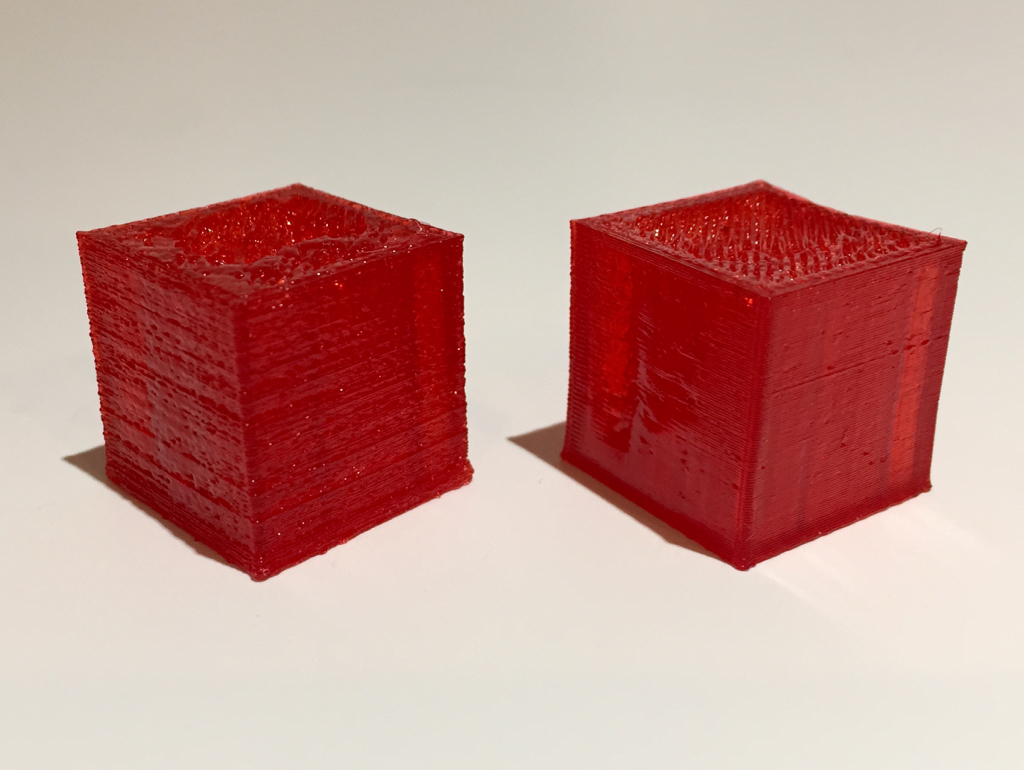
Here we see two standard 20mm cubes. The left one was, it turned out, printed at too hot a temperature. You can see the roof collapsing slightly. On the right we dropped the temperature slightly and got much better results. And, we should say, these cubes are indeed flexible: they’re quite squishy.
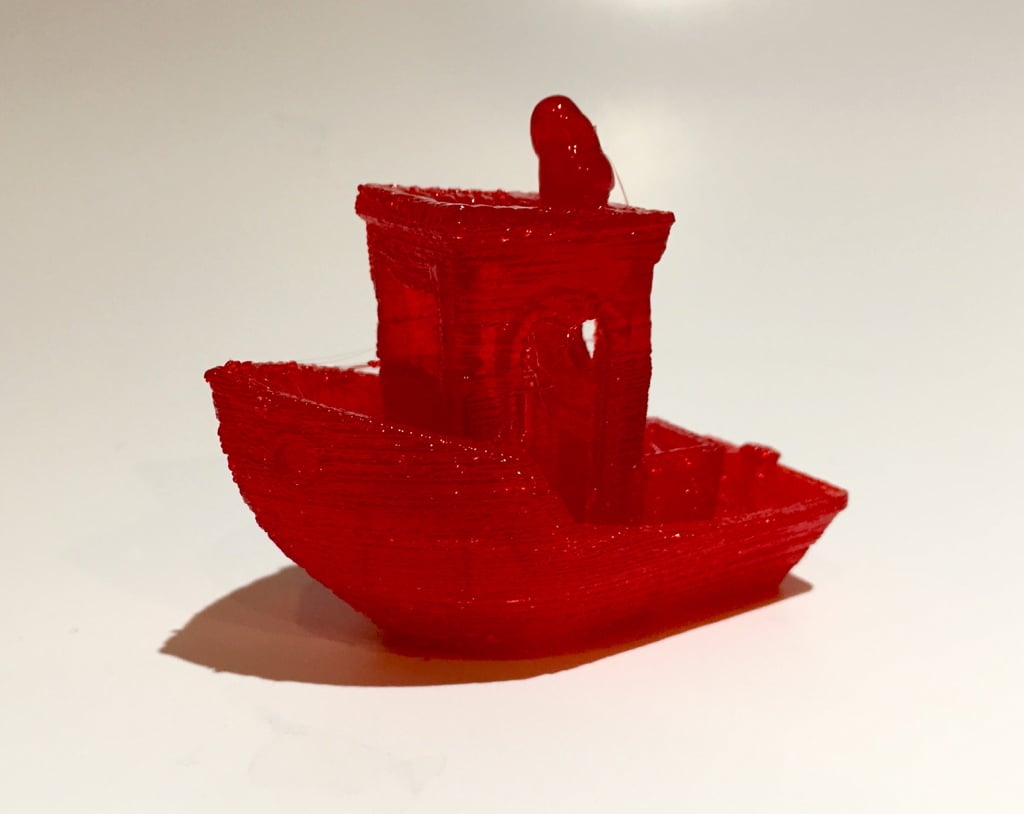
Here we see a more difficult test of the flexible filament: #3DBenchy. As you can see, the filament had reasonable results on the easy portions of the little ship, but was challenged by the trickier sections. We made a flexible boat!
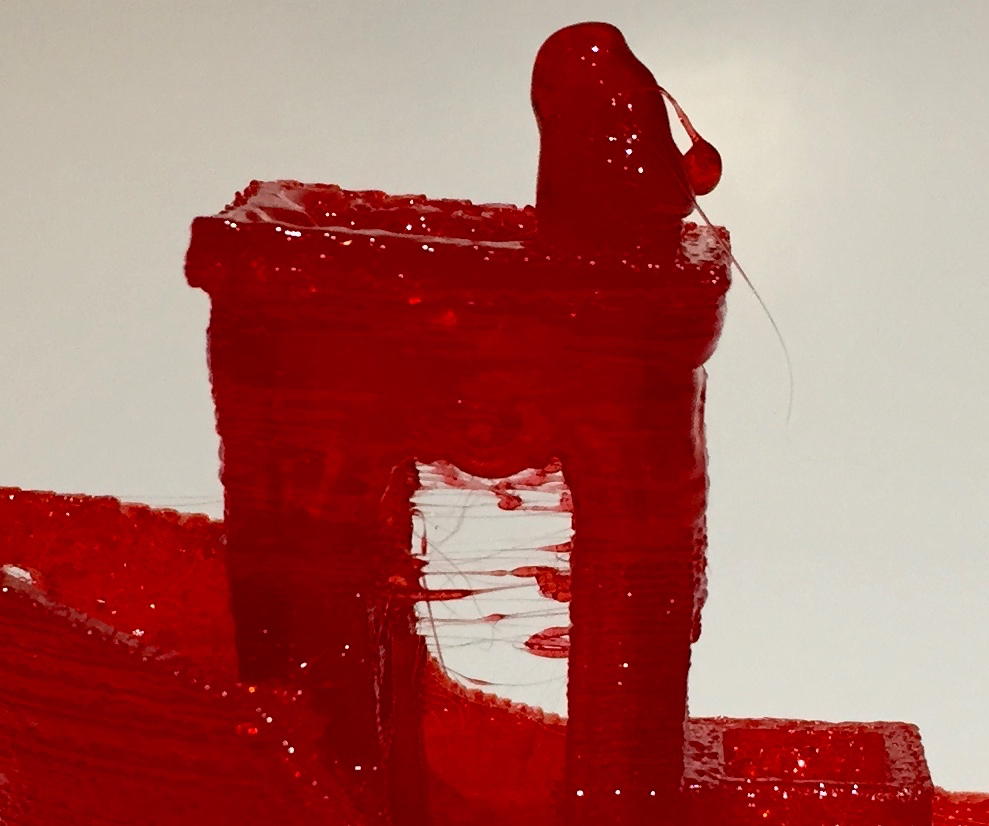
In fact, overhangs were quite difficult for this filament. Perhaps we would have had better results if we spent more time tuning the speed and temperature parameters, but you get the idea. This flexible filament is probably not suited for printing complex objects, but instead for printing small flexible elements that can be incorporated into a larger design involving rigid components.
One interesting twist to the use of TPU is a near-complete lack of odor while printing, unlike ABS.
Pricing for the flexible TPU filament is decent at only USD$25 per Kg. Meanwhile, the wood filament, which we did not test, sells for USD$35 per Kg.
Via FoxSmart

